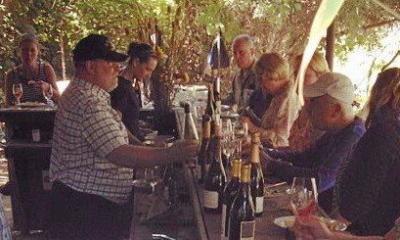I came to work earlier this week to find a message from a wine club member:
Alder Yarrow posted a piece on Vinography today, and in it he noted that Arsenic is naturally occurring in soils, and that water contains Arsenic, and that bentonite, a clay sometimes used for fining, may likely contain Arsenic. Yarrow, also correctly pointed out that this story may be much ado about nothing, or unnecessary scaremongering, or a horribly self-serving manufactured ‘crisis.’ The folks doing the testing also filed a class action suit and may materially benefit from their findings. Yarrow also correctly stated that water consumption is (hopefully) much greater than wine consumption, and that even taking the test results at face value, the results mean very little, with negligible – or no – real health risk posed to consumers. Yarrow also shared that apple juice contains far higher level of Arsenic than wine or water, with no genuine concerns raised. A commenter to Yarrow’s post also suggested that the correlation between less expensive wine and higher tested levels of Arsenic may owe to second and third pressings of grape skins and seeds, in an effort to squeeze every last drop of juice, leading to the higher Arsenic concentrations; and pointed to a similar ‘get it all’ link between apple juice production and high levels of Arsenic in that juice.
Pam Strayer also weighed in with a post on Organic Wines Uncorked. Strayer provided a link to a list of the 78 wines with the highest concentrations of Arsenic. The list, from the original story’s souce, is located on a site called TaintedWine.com, whose very name suggests an axe to grind. That said, as Strayer correctly points out in her excellent post, NONE of the wines listed was grown certified organically or certified biodynamically. Strayer also provides a list of inexpensive wines grown organically in her piece today. Some things to consider: Arsenic is found in many inorganic fertilzers. Arsenic is also used as an pesticide. Organic herbicides may not contain Arsenic. It seems possible, to me, that it may be the use, or overuse, of these Arsenic laden chemical processes in conventional agriculture, and run off of those chemicals, that leads to measurable concentrations of Arsenic in stream, river, and lake water; as much or more than a leaching of heavy metals from the soil. As Mendocino County has the highest concentration of organic and biodynamic grape growers in America, I am pleased that none of the listed offenders was organic. That said, bentonite can be used in organically grown wines, and water polluted by conventional commercial agribusinesses is used by everyone, conventional and organic growers alike, in frost mitigation and irrigation. It is likely that ALL wine contains trace amounts of Arsenic, but is also likely that the levels are lower in wines made from organically and biodynamically grown grapes. Even so, there really seems to be very little cause for concern in the reports, it sounds horrible which plays great on television, but is of likely little real health consequence. If the spectre of danger from Arsenic in wine concerns you, I would suggest that organically or biodynmically grown wines might be the way to go for you. To be clear, I am neither a doctor nor scientist, and have never played one on TV; and every time I leave the realm of fact, I am involved in conjecture. Educated, informed conjecture; but conjecture, nonetheless. I’ll come back to add any info of significance, should it become available, but for now I think we can turn the page on this story.
EDITED TO ADD: Thanks to winemaker Mark Beaman for correcting my spelling of bentonite. I would love to blame autocorrect for the misspelling, but the mistake was surely all mine. Thanks to Di Davis, who shared the observations of her husband Will, who IS a scientist, and points out that Arsenic is everywhere and in everything, and the real focus should not be on concentrations but on dosage. What dose of Arsenic are you incurring from drinking inexpensive wine with a higher concentration of Arsenic than is allowed for California’s water? Likely a lot lower than merits your concern or fear.
In addition to any material gain that may come from the lawsuit filed, the testing company is holding itself out as a solution for the spurious problem they have promoted, offering their testing services to the very wine brands they are suing, it has been reported. At least one winery has tried to seek benefit from this story, posting on Facebook that their wine has “No Arsenic” which likely violates at least two laws, the first against false advertising and the second against the health claim prohibition all wineries are required to follow.


